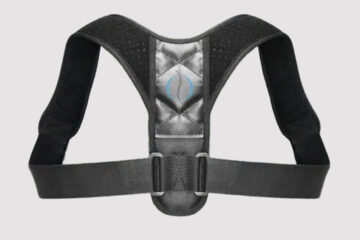Nutrition And Fitness: Facts And Fiction!

There’s no shortage of all kinds of fitness and health advice available for your consumption. The internet has contributed heavily to both education and misinformation about what you can and should do to your body.
However, it doesn’t take a genius to realize that not all of this information is correct or really worth following and adapting to your lifestyle for a variety of reasons. There are several myths and facts that are necessary to identify, both as a layperson and as a certified fitness trainer. Here are some major ones:
Myth: You don’t need to stretch before a workout
A lot of people skip stretching before a workout even though that could be quite harmful and contribute to injuries and accidents. However, the type of stretches is also important to know. Static stretches such as toe touches or backbends actually exert your muscles and end up hurting you more than you realize since they work and extend cold muscles.
Instead, what you should be doing are dynamic stretches that heat you up, gently but effectively get your muscles moving, and increase your heart rate, so it’s not spiking immediately. Dynamic stretches help prepare your body for the movement ahead, whether it’s a run, HIIT, strength training, or even yoga.
Fact: Warm-ups and cool-downs are very important
Additionally, it’s also important to perform both warm-ups and cool-downs to sandwich your workouts. Warm-ups are important for loosening up muscles, raising your heart rate steadily, and preparing your body, giving you a milder workout before the main event. They can be paired or combined with dynamic stretches to save more time if you want.
Cool-downs do the opposite. They help regulate and lower your heart rate, give your muscles a chance to contract and relax, prevent injuries and pain, and normalize your breathing.

Myth: You need tons of protein to get leaner and stronger
Gym bros and Instagram baddies might be telling you to up your protein intake and consume several hundred grams a day. However, there’s no need for you to do that or to overdo protein consumption. It’s recommended that you get around 0.8 g of protein per kilo of body weight, so roughly 50-175 grams a day, on average. Depending on your body weight and fitness goals, that amount may vary, but in no way do you need to be chugging down tons of protein shakes, guzzling eggs, and an entire rotisserie chicken to get lean and strong.
Fact: A balanced diet is a key to sustainable results
What is true, however, is that a balanced diet is the key to long-term, sustainable results. Simply put, you should be consuming protein, carbs, fats, fiber, and other food groups to get all the necessary nutrients your body needs. Some may be more than others, depending on your goals.
Add more fruits, vegetables, and complex carbohydrates to your diet along with ith protein sources like eggs, meat, lentils, and fish, to ensure that you’re getting iron, calcium, magnesium, and other major minerals and vitamins.

Myth: You can out-exercise a bad diet and nutrition
As much as we’d like to believe that you can outrun a bad diet, it’s simply not true. It’s virtually impossible to burn the calories you consume by simply working out, especially if you’re not eating in a conscious deficit. The way to do that is to cut back on what you typically eat and consume based on your basal metabolic rate. That puts your body in a state of energy disbalance, and your body is dependent on fat stores to derive energy. It’s simple in principle but reiterates the fact that you cannot simply exercise more than you eat because you burn a lot less than you think during a workout.
But note that it’s not just about calories in vs. calories out; the quality of calories you consume also makes a difference.
Fact: Not everyone will respond to the same routine
With that said, however, it’s also important to realize that not everyone will respond to the same workout and diet plan the same way. 1500 calories is not a magic number for weight loss, and neither is it a standard. Some people require more than that to get through the day and fuel their bodies, and that’s okay. Other factors such as genetics, age, gender, hormonal balance, and overall health status can all play a role in how someone responds to weight loss methods, including diet and exercise. It’s important to know this as a trainer in order to help your clients in the most effective way possible.
That’s why the best approach is to factor in these differences and unique requirements and follow a program that focuses on cardio, strength, endurance, and mobility and takes a varied, holistic approach to fitness overall.

Myth: Anyone who’s lost weight or is fit can be a trainer
Lastly, this is a big myth that many people believe or fall victim to. Just because someone looks a certain way doesn’t make them less or more qualified to train others. Being a fitness professional means that you go through rigorous training and education, familiarize yourself with anatomy, understand the science of nutrition and fitness, and much more. Having a set of abs doesn’t make you an expert, and having a rounder, softer belly doesn’t make you a bad coach.
Nutrition is both more complex and simpler than we realize. There’s a lot of information out there that is important to understand, but at the same time, it’s necessary to have the right training, education and know the science behind it.
You can learn more about nutrition and fitness science through personal health trainer programs offered by WITS Eduction. They offer an extensive range of training and educational programs and modules, allowing you to become a certified exercise instructor under the guidance and mentorship of the most experienced teachers. Learn more about their programs online, or reach out to them to know more about their services.
Leave a reply
You must be logged in to post a comment.











